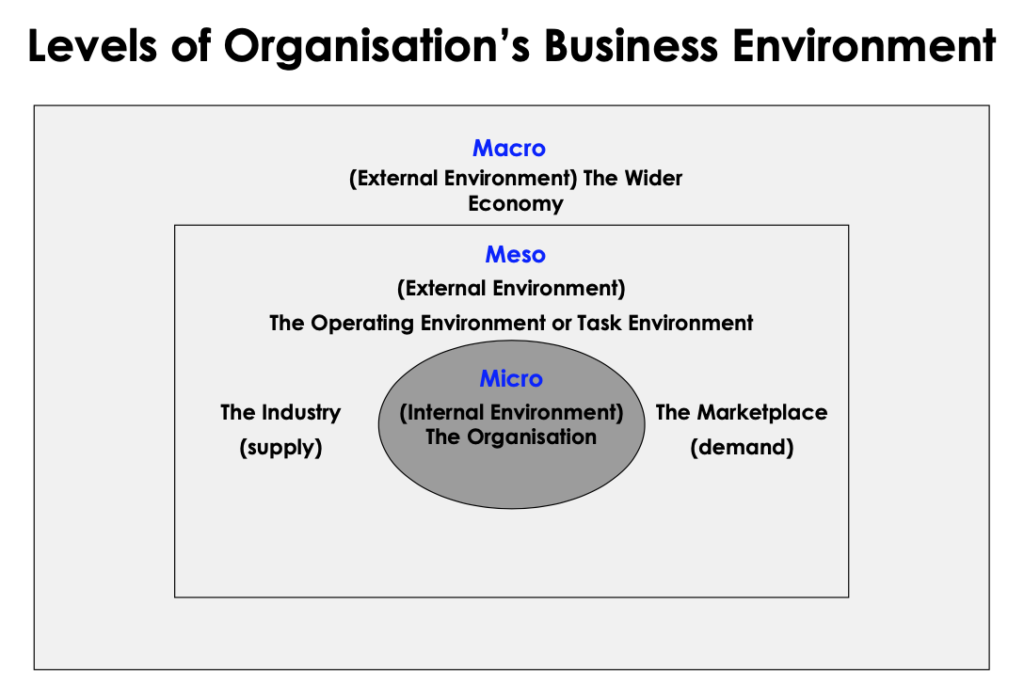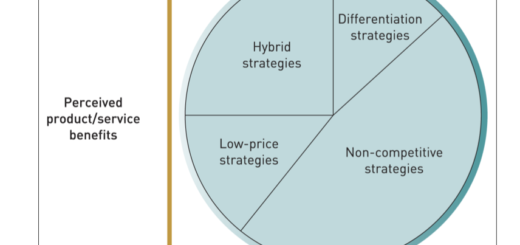Levels of Organisation Business Environment

The levels of organization in a business environment are typically categorized as follows:
- Micro-level (Internal Environment – The Organisation): Refers to the internal environment of a business, including the organization’s employees, culture, and management structure.
- Meso-level (External Environment – The Operating Environment or Task Environment): Refers to the industry or sector in which a business operates, including its competitors, suppliers, and customers.
- Macro-level (External Environment – The Wider Economy): Refers to the broader external environment in which a business operates, including economic, political, social, and technological factors.
These levels are interdependent and affect each other, and businesses must consider all three levels when making decisions and developing strategies.
External and Internal Analysis
Internal Analysis Tools
| Resource and Competence Analysis |
| VRIN, Value Chain Analysis |
| McKinsey Seven S analysis |
| Financial Analysis, Report reviews |
| SWOT/TOWS |
External Analytical Tools
| PESTLE/PEST/STEPLE |
| Porter’s 5 forces |
| Competitor Analysis |
| Strategic Grouping |
| KSF analysis |
The purpose of Internal analysis
- The systematic evaluation of the key internal features of an organization.
- Identification of internal strengths and weaknesses that are key to successful organizational performance
- Considering the ability to respond to threats & opportunities identified in external analysis
- Diagnosing, exploring and clarifying key issues that will need to be addressed in future strategy of the Organization
Five Areas to consider for internal analysis
- The objectives and purpose of the organization and why it exists
- The organization’s resources and capabilities
- Way in which organization configures and co-ordinates its key value-adding activities
- The structure of the organization and the characteristics of its culture
- The performance of the organization as measured by its size and financial performance



Some truly superb posts on this web site, thank you for contribution. “There is one universal gesture that has one universal message–a smile” by Valerie Sokolosky.